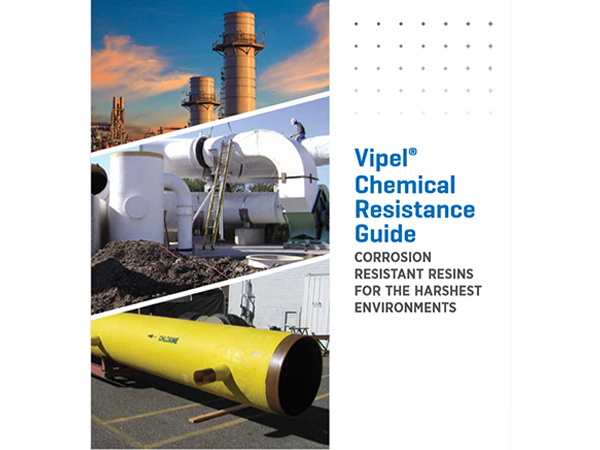
-
 Afrikaans
Afrikaans -
 Albanian
Albanian -
 Amharic
Amharic -
 Arabic
Arabic -
 Armenian
Armenian -
 Azerbaijani
Azerbaijani -
 Basque
Basque -
 Belarusian
Belarusian -
 Bengali
Bengali -
 Bosnian
Bosnian -
 Bulgarian
Bulgarian -
 Catalan
Catalan -
 Cebuano
Cebuano -
 China
China -
 China (Taiwan)
China (Taiwan) -
 Corsican
Corsican -
 Croatian
Croatian -
 Czech
Czech -
 Danish
Danish -
 Dutch
Dutch -
 English
English -
 Esperanto
Esperanto -
 Estonian
Estonian -
 Finnish
Finnish -
 French
French -
 Frisian
Frisian -
 Galician
Galician -
 Georgian
Georgian -
 German
German -
 Greek
Greek -
 Gujarati
Gujarati -
 Haitian Creole
Haitian Creole -
 hausa
hausa -
 hawaiian
hawaiian -
 Hebrew
Hebrew -
 Hindi
Hindi -
 Miao
Miao -
 Hungarian
Hungarian -
 Icelandic
Icelandic -
 igbo
igbo -
 Indonesian
Indonesian -
 irish
irish -
 Italian
Italian -
 Japanese
Japanese -
 Javanese
Javanese -
 Kannada
Kannada -
 kazakh
kazakh -
 Khmer
Khmer -
 Rwandese
Rwandese -
 Korean
Korean -
 Kurdish
Kurdish -
 Kyrgyz
Kyrgyz -
 Lao
Lao -
 Latin
Latin -
 Latvian
Latvian -
 Lithuanian
Lithuanian -
 Luxembourgish
Luxembourgish -
 Macedonian
Macedonian -
 Malgashi
Malgashi -
 Malay
Malay -
 Malayalam
Malayalam -
 Maltese
Maltese -
 Maori
Maori -
 Marathi
Marathi -
 Mongolian
Mongolian -
 Myanmar
Myanmar -
 Nepali
Nepali -
 Norwegian
Norwegian -
 Norwegian
Norwegian -
 Occitan
Occitan -
 Pashto
Pashto -
 Persian
Persian -
 Polish
Polish -
 Portuguese
Portuguese -
 Punjabi
Punjabi -
 Romanian
Romanian -
 Russian
Russian -
 Samoan
Samoan -
 Scottish Gaelic
Scottish Gaelic -
 Serbian
Serbian -
 Sesotho
Sesotho -
 Shona
Shona -
 Sindhi
Sindhi -
 Sinhala
Sinhala -
 Slovak
Slovak -
 Slovenian
Slovenian -
 Somali
Somali -
 Spanish
Spanish -
 Sundanese
Sundanese -
 Swahili
Swahili -
 Swedish
Swedish -
 Tagalog
Tagalog -
 Tajik
Tajik -
 Tamil
Tamil -
 Tatar
Tatar -
 Telugu
Telugu -
 Thai
Thai -
 Turkish
Turkish -
 Turkmen
Turkmen -
 Ukrainian
Ukrainian -
 Urdu
Urdu -
 Uighur
Uighur -
 Uzbek
Uzbek -
 Vietnamese
Vietnamese -
 Welsh
Welsh -
 Bantu
Bantu -
 Yiddish
Yiddish -
 Yoruba
Yoruba -
 Zulu
Zulu
Lightweight Fiberglass Hoods for Enhanced Performance and Aesthetic Appeal in Automotive Design
The Rise of Fiberglass Hoods in Automotive Customization
In the world of automotive customization, few components are as significant as the hood. It serves not only as a protective cover for the engine but also as a crucial element of a vehicle’s aesthetics. Recently, fiberglass hoods have emerged as a popular choice among car enthusiasts and builders alike. This article explores the advantages, innovations, and growing trend of fiberglass hoods in the automotive industry.
Fiberglass, a composite material made from fine glass fibers and resin, offers several benefits over traditional steel or aluminum hoods. One of the primary advantages is weight reduction. Fiberglass hoods are significantly lighter than their metal counterparts, which can lead to performance improvements. A lighter hood contributes to better acceleration, improved fuel efficiency, and enhanced handling. This is particularly beneficial for race cars and high-performance vehicles, where every ounce of weight matters.
The durability of fiberglass is another reason for its popularity. Unlike metal, fiberglass does not rust, which means it can withstand exposure to the elements without degrading. This longevity appeals to car enthusiasts who seek to maintain their vehicles for years to come. Furthermore, fiberglass has excellent flexibility, which allows it to absorb impacts better than metal, reducing the likelihood of dents and damage from minor accidents.
One of the most exciting aspects of fiberglass hoods is the range of customization options. Fiberglass can be molded into intricate shapes and designs, allowing for unique and aerodynamically efficient profiles. Many manufacturers offer a variety of designs, from subtle scoops to aggressive vents, catering to different aesthetic tastes and performance needs. This level of customization allows car owners to personalize their vehicles, enhancing both appearance and functionality.
fiberglass hood

The production of fiberglass hoods has also seen significant innovations in recent years. Advances in manufacturing techniques, such as vacuum infusion and RTM (Resin Transfer Molding), have improved the quality and consistency of fiberglass components. These methods allow for the creation of lighter and stronger products while minimizing air entrapment in the mold. As a result, modern fiberglass hoods are not only lightweight but also boast a higher resistance to cracking and deformation under stress.
Moreover, the growing popularity of fiberglass hoods is mirrored in the automotive aftermarket. Many car manufacturers offer fiberglass options for their models, while aftermarket companies provide a wealth of options for various makes and models. This accessibility has made it easier than ever for car enthusiasts to find the perfect hood for their build. In addition, the community surrounding automotive customization has embraced these parts, leading to a wealth of resources, including forums and tutorials, which share tips on installation and maintenance.
Despite these advantages, it’s important to consider some potential downsides of fiberglass hoods. They can be more expensive than traditional hoods, depending on the design and manufacturer. Additionally, the installation process may require more finesse, as proper alignment is crucial to ensure functionality and fit. However, for many car enthusiasts, these factors are outweighed by the benefits that fiberglass hoods provide.
In conclusion, fiberglass hoods have solidified their place in the automotive community, driven by their lightweight nature, durability, and customization potential. As technology continues to advance, it’s likely that we will see even more innovative designs and applications for fiberglass in the automotive sector. Whether for performance enhancements or aesthetic upgrades, fiberglass hoods offer a compelling option for anyone looking to take their vehicle to the next level. With their blend of functionality and style, fiberglass hoods are undoubtedly shaping the future of automotive customization.
Latest news
-
Exploring the Benefits of Top Hammer Drifter Rods for Enhanced Drilling PerformanceNewsJun.10,2025
-
High-Precision Fiberglass Winding Machine for GRP/FRP Pipe Production – Reliable & Efficient SolutionsNewsJun.10,2025
-
FRP Pipes & Fittings for Shipbuilding - Corrosion-Resistant & LightweightNewsJun.09,2025
-
Premium FRP Flooring Solutions Durable & Slip-ResistantNewsJun.09,2025
-
Premium Fiberglass Rectangular Tanks Durable & Lightweight SolutionNewsJun.09,2025
-
Tapered Drill String Design Guide Durable Performance & UsesNewsJun.09,2025









